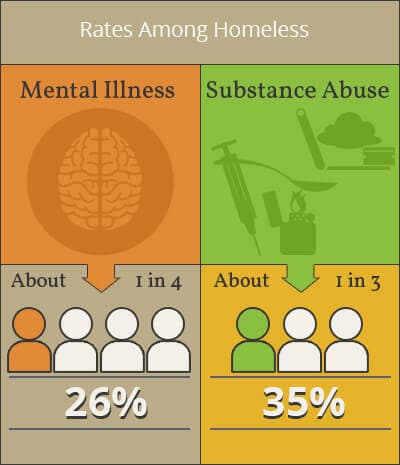- Abuse & The Abuser
- Achievement
- Activity, Fitness & Sport
- Aging & Maturity
- Altruism & Kindness
- Atrocities, Racism & Inequality
- Challenges & Pitfalls
- Choices & Decisions
- Communication Skills
- Crime & Punishment
- Dangerous Situations
- Dealing with Addictions
- Debatable Issues & Moral Questions
- Determination & Achievement
- Diet & Nutrition
- Employment & Career
- Ethical dilemmas
- Experience & Adventure
- Faith, Something to Believe in
- Fears & Phobias
- Friends & Acquaintances
- Habits. Good & Bad
- Honour & Respect
- Human Nature
- Image & Uniqueness
- Immediate Family Relations
- Influence & Negotiation
- Interdependence & Independence
- Life's Big Questions
- Love, Dating & Marriage
- Manners & Etiquette
- Money & Finances
- Moods & Emotions
- Other Beneficial Approaches
- Other Relationships
- Overall health
- Passions & Strengths
- Peace & Forgiveness
- Personal Change
- Personal Development
- Politics & Governance
- Positive & Negative Attitudes
- Rights & Freedom
- Self Harm & Self Sabotage
- Sexual Preferences
- Sexual Relations
- Sins
- Thanks & Gratitude
- The Legacy We Leave
- The Search for Happiness
- Time. Past, present & Future
- Today's World, Projecting Tomorrow
- Truth & Character
- Unattractive Qualities
- Wisdom & Knowledge
Health & Wellness Wednesdays
Homelessness, Addiction, and What We’re Not Doing
Early this year, the world went through something uncommon and terrifying. Covid-19 resulted in businesses shutting down, jobs being lost, and of course, everyone locking themselves at home.
Unfortunately, for some of our most vulnerable, quarantine was never an option. The homeless population across Canada and the United States has been increasing yearly, leaving thousands of people on the street with nowhere to go.
Substance abuse & addiction is a significant contributing factor to homelessness, and many who end up homeless for other reasons end up abusing substances.
This is largely due to the fact that getting effective treatment for substance abuse issues is extremely difficult.
In order to recover and heal from an addiction, most people need a combination of counselling, alternative ways to enjoy life, and a strong community. But if rehabilitation programs cost more than the average can afford, there's few options.
Addiction is, more often than not, world-consuming. It can cost people their homes, jobs, and livelihoods.
It's easy enough to assume that people don't get help because they don't want to, but that's not always the case.
We must change this system. The statistics don't lie, and addiction isn't going anywhere. The only way to protect each other as a society is to give each other options.
Rehabilitation Centers need to be affordable, greater in number, and overall more accessible. Additionally, escaping homelessness is nearly impossible for most people. You can't get a job without a permanent home, and you can't get a place to live without a job.
If we truly want to protect our citizens and create a flourishing society, we need to put systems in place where there is at least opportunity for those stuck in unhealthy situations to get out.
Interesting Fact #1
The last time a global survey was conducted in 2005, the UN found approximately 100 million people were homeless worldwide. Up to 1.6 billion people lacked adequate housing.
Interesting Fact #2
Over 235,000 Canadians experience homelessness in one year.
Interesting Fact #3
1.2 million homes were foreclosed upon in the United States between 2007-2009, the effects of which are still strongly felt.
Quote of the day
We have come dangerously close to accepting the homeless situation as a problem that we just can't solve.
Article of the day - The Connection Between Homelessness and Addiction
In 2017, there were approximately 554,000 homeless people in the United States. The US homeless population is increasing yearly, particularly in younger age ranges. Tragically, homelessness and addiction go hand in hand. The end result of homelessness is often substance abuse, and substance abuse often contributes to homelessness. The National Coalition for the Homeless has found that 38% of homeless people are alcohol dependent, and 26% are dependent on other harmful chemicals.
Often times, addiction is a result of homelessness. The difficult conditions of living on the street, having to find food, struggling with ill-health, and being constantly away from loved ones creates a highly stressful state of being. Individuals suffering from homelessness may additionally develop psychiatric conditions in response to the harsh lifestyle of feeling threatened by violence, starvation, and lack of shelter and love.
Homelessness, Mental Disorders, and Addiction
Reports suggest 33% of homeless people battle mental illness. Sources cite mental illness as another major cause of homelessness, which often leads to drug and alcohol abuse. Common mental disorders the homeless struggle with include:
- Bipolar disorder
- Paranoia/Delusions
- Schizophrenia/Schizoaffective disorder
- Post-Traumatic Stress Disorder (particularly high in homeless veterans)
- Major depressive disorder
- Severe anxiety
In addition to suffering mental illness, homeless individuals suffering mental conditions are more likely to be victims of assault, further needing the comfort they temporarily find in harmful substances. Homeless individuals suffering difficult mental and emotional conditions may find it convenient to self-medicate with harmful substances as well. The combination of mental disorders and substance abuse is known as dual diagnosis or co-occurring disorders. While it may seem that difficult mental conditions can be suppressed by drugs and alcohol use, this actually creates a destructive cycle of dependency.
Women, Homelessness, and Addiction
Homeless women suffer unique gender-based trauma, contributing to the higher amounts of drug use with homeless women than men. While 30% of homeless people overall suffer mental illness, the rate is significantly higher in female populations. 50% to 60% of homeless women suffer mental and emotional disturbances, often pre-dating their homelessness.
Many homeless women become homeless in response to escaping pasts laden with domestic violence or sexual trauma; some are victims who fled the hard grip of sex trafficking. These factors, along with co-occurring disorders from homelessness, have contributed to the fact that approximately one-third of homeless women have abused heroinand crack cocaine.
Young Adults, Homelessness, and Addiction
Many homeless youths and young adults are victims of substance abuse. Youths aged 12 to 17 are at greater risk of homelessness than adults, and many homeless youths have been the victims of severe abuse. 71% of missing, runaway, throwaway, or abducted children reported a substance abuse disorder.
Factors contributing to such youth homelessness substance abuse:
- Growing up in a homeless family
- Genetics of substance abuse
- Family abuse
- Maladaptive coping mechanics to stress
- Co-occurring disorders
- Early use of substance abuse (using at a very young age)
- Physical, sexual, and emotional abuse
- Running away from home
Homeless youths with substance abuse issues are much more vulnerable to long-term substance abuse and untreated co-occurring disorders which follow them into adulthood.
The LGBTQ Community, Homelessness, and Addiction
LGBTQ populations suffer from high rates of drug and alcohol abuse. They also suffer minority stress, stress which stems from internalized feelings of cultural/social exclusion and fuels their chemical dependency. Unfortunately, members of the LGBTQ community also have a 120% higher risk of homelessness.
Homeless members of the LGBTQ community are not immune to drug and alcohol abuse. More members of this community face depression, PTSD, anxiety and suicidal ideation (thoughts of suicide), and self-medicating with substance when homeless. According to Psychology Today, homeless LGBTQ members “have the highest number of illicit drug use.” Homeless lesbian women (and lesbian women in general) report higher numbers of alcohol abuse in response to the internalized disorders and minority stress. When homeless, they are more subjected to violence and sexual assault compared to their heterosexual counterparts. In particular, homelessness is more common in the transgender community, as members of the transgender community often struggle with job discrimination.
Connections between homelessness and addiction are unfortunate manifestations of cause and effect, but hope is not lost. Medical professionals at rehab facilities are sensitive to the needs of their patients. Contact a treatment provider and discover how you or a loved one suffering can take control and change their life.
Question of the day - What do you think is the best way to help someone trying to escape homelessness?
Dealing with Addictions
What do you think is the best way to help someone trying to escape homelessness?










